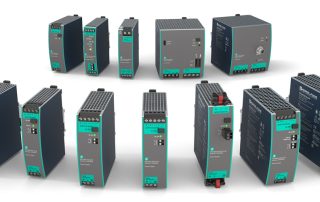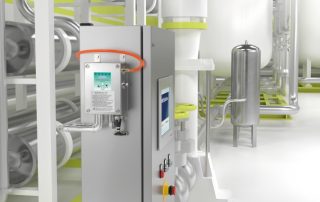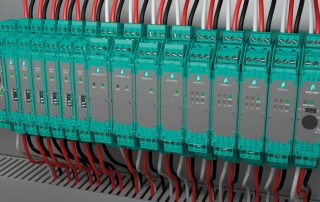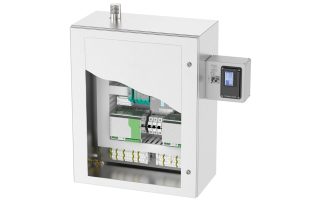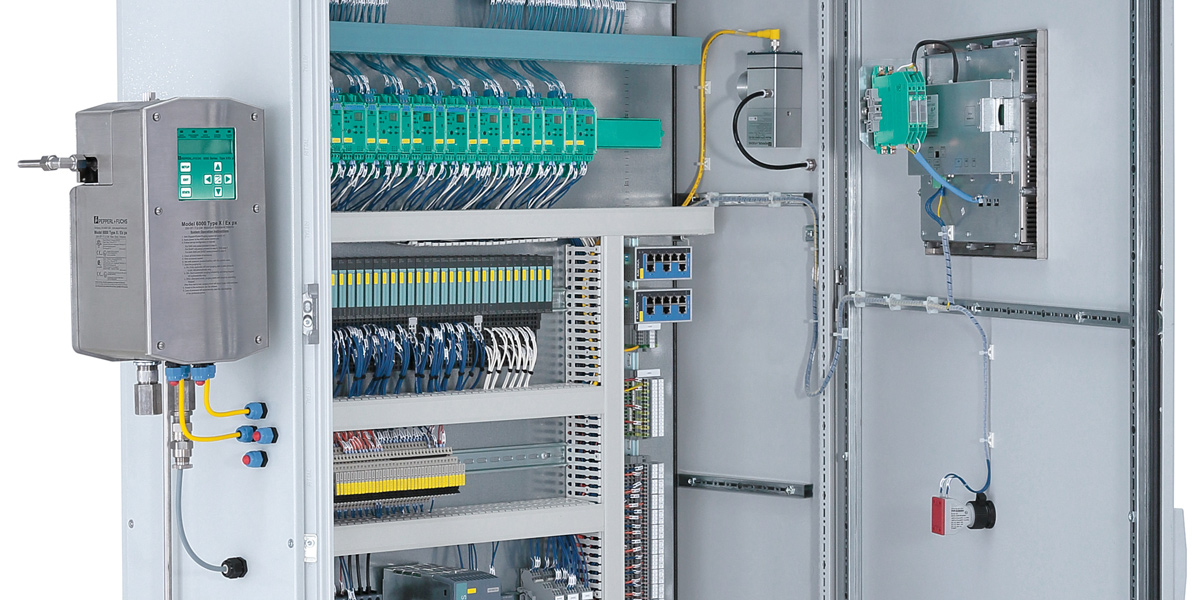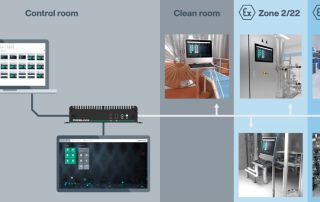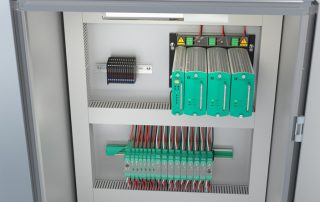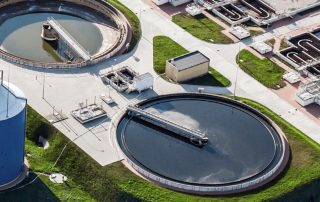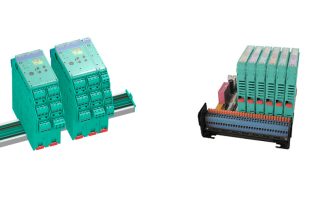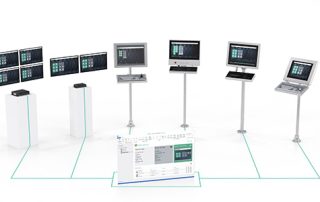Explosion Protection
Learn more about the products and technologies for the electrical explosion protection of your plant on the Pepperl+Fuchs blog. As an innovator in the field of process and plant automation, Pepperl+Fuchs not only enables secure signal transmission from the field to the process control level, but also the fast transmission of large amounts of data from hazardous areas to the cloud via Ethernet-APL. In this section, we go into detail about the use and advantages of explosion protection components for the automation of your processes.
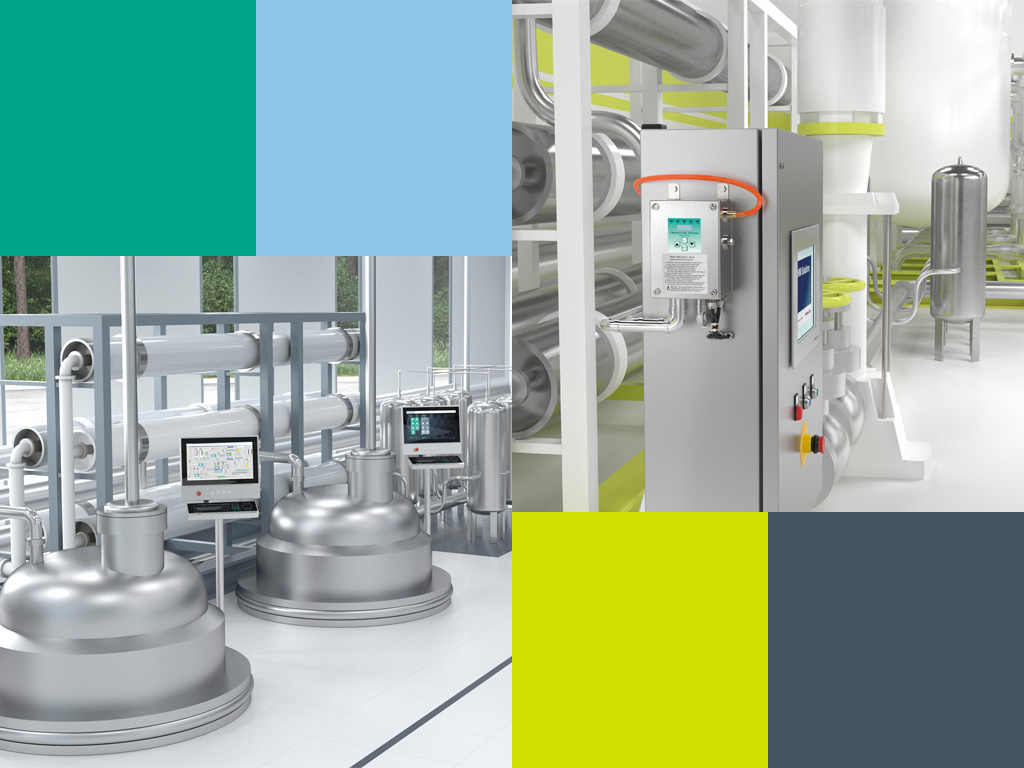
Explosion Protection
Learn more about the products and technologies for the electrical explosion protection of your plant on the Pepperl+Fuchs blog. As an innovator in the field of process and plant automation, Pepperl+Fuchs not only enables secure signal transmission from the field to the process control level, but also the fast transmission of large amounts of data from hazardous areas to the cloud via Ethernet-APL. In this section, we go into detail about the use and advantages of explosion protection components for the automation of your processes.

PS1000 Industrial Power Supplies in Redundant Architectures up to Zone 2/Div. 2
Industrial power supplies of the PS1000 series are used everywhere in automation technology where high system availability, redundancy and economic efficiency are required. The PS1000 series includes 1- and 3-phase power supplies as well as modules with built-in redundancy and redundancy modules. In this blog article, we take a closer look at the advantages and functionalities of these modules and support you in setting up your redundant power supply.
Setup, Installation and Commissioning of the 5500-MAN Manifold Valve System for Fully Automatic Pressurized Enclosure Systems
In this two-part video series, Chris Romano, Product Manager for Purge and Pressurization, shows you the intended use, setup, installation, and commissioning of the 5500-MAN-** manifold valve system for the fully automatic pressurized enclosure systems of the 5500 and 7500 control units from Pepperl+Fuchs in a live demo. What is the 5500-MAN-** manifold valve system and how does it work with the 7500 or 5500 control unit?
Line Fault Detection without Additional Wiring
From the recording of the process variable to the evaluation in the control system, many errors can occur that can lead to unwanted process states. In this blog post you can find out how isolated barriers from Pepperl+Fuchs detect line faults in the signal circuit without additional wiring.
Configuring the 7500 Series Purge and Pressurization System
The 7500 series is a type Z/Ex pzc purge and pressurization system that enables non-rated electrical equipment to be used in hazardous areas. This blog article shows you how to configure the 7500 system components, i.e. control unit, manifold valve, and vent.
How to Prevent Dust Explosions Using Pressurization
One of the best ways to prevent dust explosions is to thoroughly clean the work environment of combustible dust to ensure the safety of the plant and workers. However, equipment operating in enclosures in the plant must also be protected. In this blog post, learn where explosive dust atmospheres occur and how they can be avoided through purge and pressurization systems.
Series 6000 Purge and Pressurization Systems replace Series 2000
Purge and pressurization systems separate general-purpose equipment from the surrounding potentially explosive atmosphere using a standard, lightweight enclosure.
Simplifying Thin Client Management with VisuNet Control Center
For automation sites that have implemented a Pepperl+Fuchs VisuNet RM Shell thin-client-based architecture for their HMI systems, VisuNet Control Center can be used to make life more manageable inside and outside of the facility.
Sinking and Sourcing with Smart Transmitter Power Supply for Analog Input Applications
When selecting an intrinsic safety barrier for an analog input application, one of the biggest issues customers face is differentiating between sinking and sourcing. These terms are used to refer to where the power of the current signal is coming from. Not sure what they mean? Keep reading.
The Benefits of Isolators with Line Fault Transparency
Highly automated systems in sensitive areas of the process industry must ensure that pumps, valves, and active cooling systems are switched on safely at all times. In this blog post, we explain the advantages plant operators have with using line fault transparency (LFT) modules from Pepperl+Fuchs.
5 Ways to Use K-System Interface Technology in Wastewater Treatment Plants
The K-System portfolio from Pepperl+Fuchs can be used to streamline processes at wastewater treatment plants. K-System interface technology comes in every signal variation, ranging from simple isolators to highly functional modules. Here are five ways the K-System portfolio can be used in wastewater treatment plants …
What Are the Differences between the K-System and the H-System?
Pepperl+Fuchs offers two extensive product families for safely transmitting signals between the field and control levels: the K-System and the H-System. Get to know the differences between and benefits of these two systems, and explains for whom each system is most suitable.
What Are Industrial Thin Clients? Part 2/2—The Benefits
Over the past decade, thin clients have become more and more popular in process automation and industrial applications. The trend toward virtualization makes thin clients an especially cost-effective solution as they allow users to access applications and information stored on centralized systems such as servers. Learn more about the benefits of thin clients in this blog post.
Subscribe to our newsletter and receive regular news and interesting facts from the world of automation.
